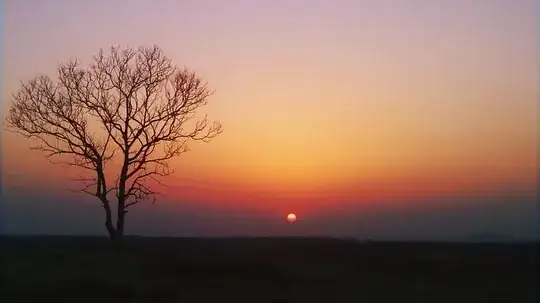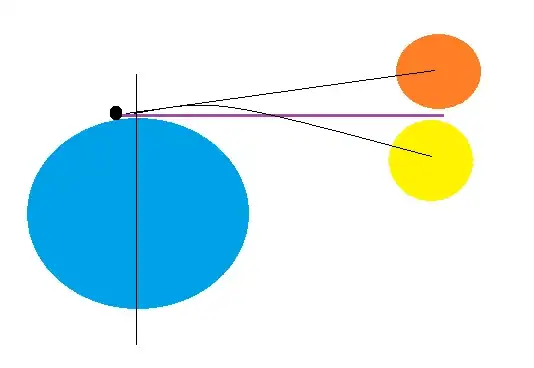The first picture shows the point in time where ancient cultures started counting the (variable with seasons) twelve hours of the day , i.e. when a line appeared between dark blue and pink.
At night the sun is obscured by the bulk of the earth, and the observable sky is in the shadow. As the earth turns towards the sun the point comes where the higher part of the atmpsphere is no longer in the shadow , and is being illuminated, which becomes more obvious if there are clouds high up, or airplane tracks.
The image below should clear up questions.

Diagram showing displacement of the Sun's image at sunrise and sunset
S' is what is observed but the real sun is at S, and the picture is recording the refracted image through the atmosphere.
The colors in the atmosphere depend on the scattering of light in the atmosphere and the type of dust and humidity in the atmosphere. The sun emits all visible frequencies of light which add up as white in our color perception.
Atmospheric nitrogen and oxygen scatter violet light most easily, followed by blue light, green light, etc. So as white light (Red,Orange,Yellow,Green,Blue,Indigo,Violet in rising frequency) from the sun passes through our atmosphere, the high frequencies (BIV) become scattered by atmospheric particles while the lower frequencies (ROY) are most likely to pass through the atmosphere without a significant alteration in their direction. This scattering of the higher frequencies of light illuminates the skies with light on the BIV end of the visible spectrum.
which we see as mostly blue.
This holds true for the shadow still seen in the second picture, where it is the refracted image of the sun coming through the atmosphere, that you have caught. The sun is still below the horizon. Refraction happens at the image dimensions the rest of the horizon does not get as many refracted rays the further away from the sun image so the earth's shadow remains dark. The sun's color is in the lower part of the spectrum, which we observe as mainly orange, because the higher frequencies are scattered more by the atmosphere.
The inverted cone of shadow can be explained by the fall of the intensity of light with respected to the projected distance to the center of the sun. Less light is there to be refracted, scatter and illuminate , as a function of the area of the sun seen over the horizon. The higher parts contribute more to the intensity than the low part of the image.




